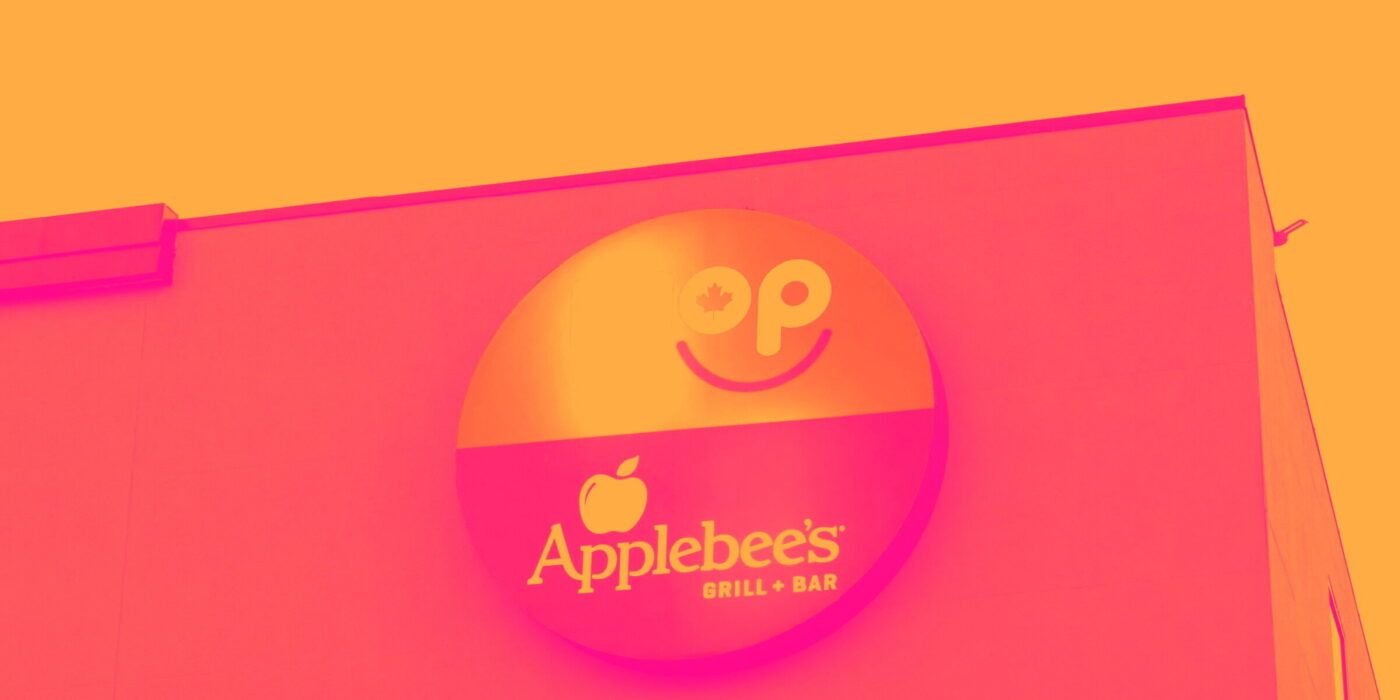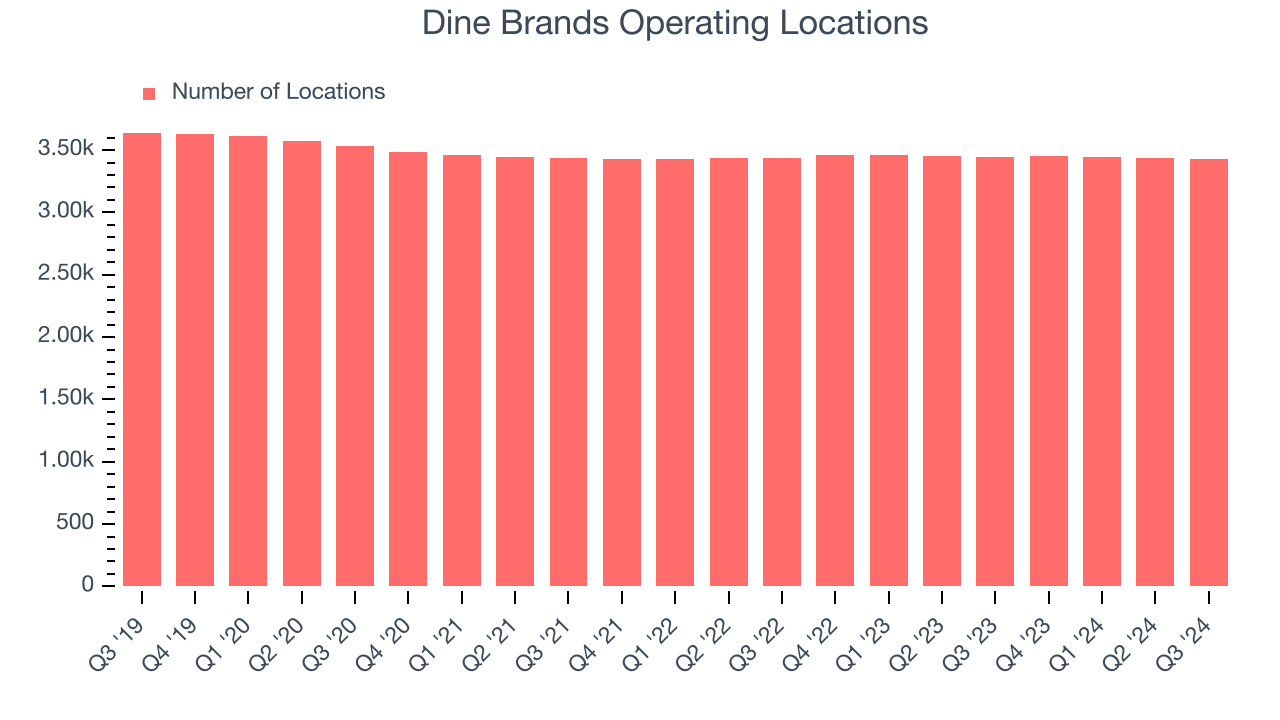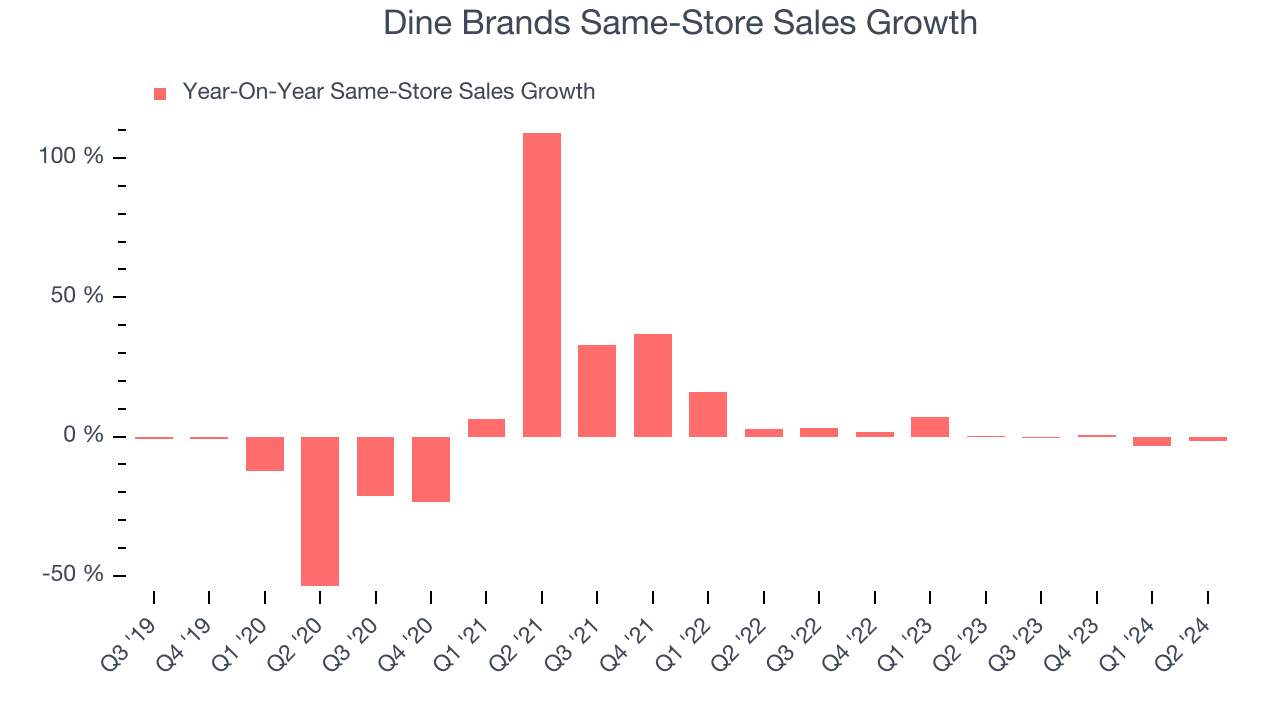
Casual restaurant chain Dine Brands (NYSE: DIN) fell short of the market’s revenue expectations in Q3 CY2024, with sales falling 3.7% year on year to $195 million. Its non-GAAP profit of $1.44 per share was 7.3% above analysts’ consensus estimates.
Is now the time to buy Dine Brands? Find out by accessing our full research report, it’s free.
Dine Brands (DIN) Q3 CY2024 Highlights:
- Revenue: $195 million vs analyst estimates of $198.4 million (1.7% miss)
- Adjusted EPS: $1.44 vs analyst estimates of $1.34 (7.3% beat)
- EBITDA: $61.9 million vs analyst estimates of $57.54 million (7.6% beat)
- EBITDA guidance for the full year is $250 million at the midpoint, above analyst estimates of $243.5 million
- Gross Margin (GAAP): 47.8%, in line with the same quarter last year
- Operating Margin: 24.6%, in line with the same quarter last year
- EBITDA Margin: 31.7%, up from 29.9% in the same quarter last year
- Free Cash Flow Margin: 11.3%, down from 13.5% in the same quarter last year
- Locations: 3,427 at quarter end, down from 3,446 in the same quarter last year
- Market Capitalization: $476.7 million
“During the third quarter, we continued to experience consumer pullback and the pressures of a highly promotional operating environment. We know we need to do more in the near term to drive traffic and get back to better top-line performance. For the fourth quarter, we are enhancing our value proposition for guests and remain focused on executing our plans across our brands,” said John Peyton, CEO, Dine Brands Global, Inc.
Company Overview
Operating a franchise model, Dine Brands (NYSE: DIN) is a casual restaurant chain that owns the Applebee’s and IHOP banners.
Sit-Down Dining
Sit-down restaurants offer a complete dining experience with table service. These establishments span various cuisines and are renowned for their warm hospitality and welcoming ambiance, making them perfect for family gatherings, special occasions, or simply unwinding. Their extensive menus range from appetizers to indulgent desserts and wines and cocktails. This space is extremely fragmented and competition includes everything from publicly-traded companies owning multiple chains to single-location mom-and-pop restaurants.
Sales Growth
Examining a company’s long-term performance can provide clues about its business quality. Any business can put up a good quarter or two, but the best consistently grow over the long haul.
Dine Brands is a small restaurant chain, which sometimes brings disadvantages compared to larger competitors benefitting from better brand awareness and economies of scale.
As you can see below, Dine Brands’s revenue declined by 1.9% per year over the last five years (we compare to 2019 to normalize for COVID-19 impacts) as it didn’t open many new restaurants.

This quarter, Dine Brands missed Wall Street’s estimates and reported a rather uninspiring 3.7% year-on-year revenue decline, generating $195 million of revenue.
Looking ahead, sell-side analysts expect revenue to remain flat over the next 12 months, an improvement versus the last five years. Although this projection indicates the market believes its newer offerings will fuel better performance, it is still below average for the sector.
Today’s young investors won’t have read the timeless lessons in Gorilla Game: Picking Winners In High Technology because it was written more than 20 years ago when Microsoft and Apple were first establishing their supremacy. But if we apply the same principles, then enterprise software stocks leveraging their own generative AI capabilities may well be the Gorillas of the future. So, in that spirit, we are excited to present our Special Free Report on a profitable, fast-growing enterprise software stock that is already riding the automation wave and looking to catch the generative AI next.
Restaurant Performance
Number of Restaurants
A restaurant chain’s total number of dining locations often determines how much revenue it can generate.
Dine Brands listed 3,427 locations in the latest quarter and has kept its restaurant count flat over the last two years while other restaurant businesses have opted for growth.
When a chain doesn’t open many new restaurants, it usually means there’s stable demand for its meals and it’s focused on improving operational efficiency to increase profitability.

Same-Store Sales
A company's restaurant base only paints one part of the picture. When demand is high, it makes sense to open more. But when demand is low, it’s prudent to close some locations and use the money in other ways. Same-store sales provides a deeper understanding of this issue because it measures organic growth for restaurants open for at least a year.
Dine Brands’s demand within its existing dining locations has barely increased over the last two years as its same-store sales were flat. This performance isn’t ideal, and we’d be skeptical if Dine Brands starts opening new restaurants to artifically boost revenue growth.
Note that Dine Brands reports its same-store sales intermittently, so some data points are missing in the chart below.

Key Takeaways from Dine Brands’s Q3 Results
We were impressed by how significantly Dine Brands blew past analysts’ EBITDA and EPS expectations this quarter. We were also glad its full-year EBITDA guidance exceeded Wall Street’s estimates. On the other hand, its revenue missed. Overall, this quarter had some key positives. The stock traded up 2.5% to $31.94 immediately after reporting.
Sure, Dine Brands had a solid quarter, but if we look at the bigger picture, is this stock a buy? We think that the latest quarter is only one piece of the longer-term business quality puzzle. Quality, when combined with valuation, can help determine if the stock is a buy. We cover that in our actionable full research report which you can read here, it’s free.







